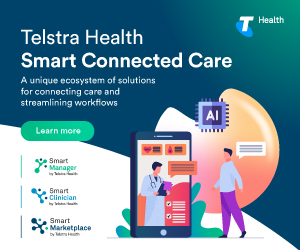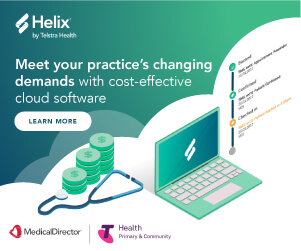The future of wearable devices in healthcare
With the rise of health and fitness apps, smartwatches and wearable devices, ‘digital wellness’ is continuing to play a bigger part in our everyday lives. Now a new report highlights how demand will continue to increase in the healthcare industry for remote monitoring and diagnostics over the next five years and why the trend will continue.
What will drive wearable uptake in health?
The Research and Markets report, Connected Wearable Devices in Healthcare, reveals some of the drivers for the increased demand of digital wellness, remote monitoring and diagnostics from 2019-2024 include:
· An ageing population
· Improved supply factors
· Bettter R&D
· Enhanced functionality
· Better integration with the Internet of Things (IoT) systems and solutions.
What are the uses of wearable devices?
According to the report, one of the core reasons for wearables in healthcare is to transmit information for medical support from a licensed professional. However, there is also a market for “quantified self” in healthcare, which refers to the incorporation of technology into data acquisition on aspects of a person’s daily life. This enables a “Do it Yourself” (DIY) tool for consumers to self-monitor and self-report important wellness items such as blood pressure.
Wearable devices can be:
- Worn and/or integrated into apparel to become less intrusive
- Sensors (biomechanical, motion, etc.), placed at specific parts of the body to communicate with an overall Body Area Network system
- “Implantables” (e.g. devices implanted within the body), including everything from pacemakers to devices that monitor key wellness levels within the body such as blood-sugar, reducing or illuminating the need for direct patient involvement.
Miniaturisation of monitoring devices and power sources has also opened up new opportunities for wearable and implantable technologies, the report found. This is especially true in the field of healthcare, an industry that is in great need for mass-personalisation at efficient and effective scale and scope.
Already, there are so many new innovative devices including ultrasounds, ECG monitors, microscopes and dermatoscopes that can view skin cancers and blood pressure monitors that can be plugged into a smartphone. A picture of an inner ear or throat taken on a smart phone can help a doctor diagnose and infection. There are even smart health devices and wearables to track and monitor lung health and medication usage for asthma patients.
And we are seeing great inroads in wellness wearables, such as ihealth’s innovative blood pressure, weight management and diabetes monitoring wearables and oximeters. Meanwhile Propell Health, the Australian partner of the company, are driving their easy-to-use and award-winning wearables in the local market, making it simple for consumers to accurately measure, track and share a full range of health vitals.
“The age of wellness wearables is definitely here,” GP and MedicalDirector’s Chief Clinical Advisor, Dr Charlotte Middelton, said. “Whether it is the middle ear devices that monitor your heart rate, the wearables on your wrist that tell you how you’re sleeping, or the ECG monitors that go around your chest – there are so many exciting technology concepts that can really enhance the care we provide as doctors.”
According to Dr Middelton, wearables also have the benefit of automating often time-consuming and manual processes, to allow doctors to make more informed diagnosis and treatment plans.
“Wearables are already tracking data such as heart rate, blood sugar levels, blood pressure, and other vital statistics, taking the pressure off the patient to manually complete these analyses. Doctors and nurses can then download the readings for a complete picture of a patient’s health,” she said in a feature published on PC World. “Heavy patient loads for doctors and a shortage of medical staff in remote areas can limit the amount of in-clinic or hospital visits for patients.”
“However through the use of wearables, medical personnel can conduct remote patient monitoring. Similarly, in the event of a health scare or crisis, patients can quickly send data to their medical team for analysis.”
The future looks promising
The report also presents a number of significant forecasts in the future of wearable wellness and connected devices health landscape over the next five years.
Key predictions include:
- One of the key growth areas for wearable healthcare devices integration is implantable medical technology
- Wearable devices for vital signs monitoring will reach USD$980M market by 2024, growing at 21.7% CAGR
- Areas of concern that will need addressing are data security, privacy as well as opportunities for advanced data analytics
- Remote data collection solutions will substantially enhance the operational efficiency of healthcare services
- Wearable devices and IoT will reduce human intervention in healthcare, enabling context-based automation
According to MedicalDirector’s CEO Matthew Bardsley, as a result of this increased wellness digital usage, individual users will have a wealth of data on their own wellbeing at their fingertips, making them far more empowered and equipped to track and monitor their own health and to some extent, even self-diagnose.
“Technology is now not only giving people incentive to become more deeply involved and interested in their own health, but they can easily share these data sets with their health practitioners in a far more accurate and structured way,” he said. “This means for the first time, the information asymmetry is changing where digitally agile patients will now have far more personal health tracking data on their own devices than their practitioner has on file. And it’s nothing to be afraid of. In fact, there are many mid-term and long-term benefits.”
Bardsley stressed increased education in the healthcare sector about ways in which patients and practitioners can better leverage technology, automation and wearables to optimise and share wellness data, can open up a fresh wave of opportunities to enable more ideal healthcare and a more patient-centric approach.
“The future looks promising,” he said. “The digitally enabled practitioner will be able to see their next patient, well-equipped with the same wealth of data that the patient has on their own wellness apps and devices – and more. The clinical visit will be more open, accurate and efficient, while the patient and practitioner relationship will become more trusting, personalised and transparent.”









